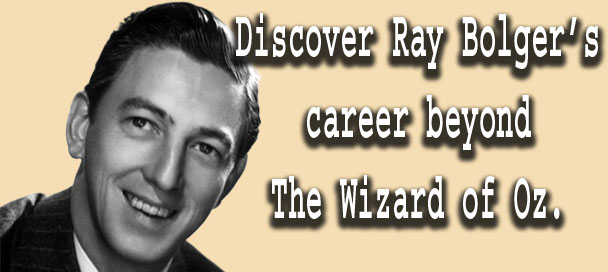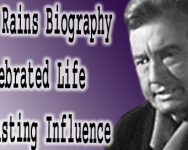🌟 Raymond Burr: TV’s Towering Courtroom Icon
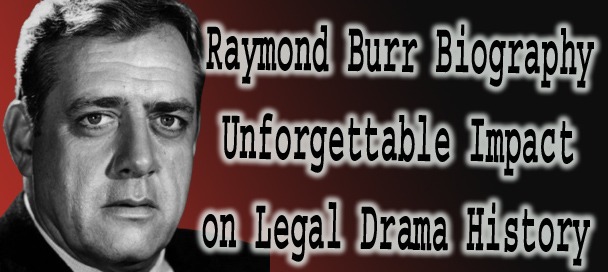
Raymond Burr as Perry Mason, commanding the courtroom with quiet intensity.
With a commanding voice, towering presence, and an unmatched ability to dominate a courtroom scene, Raymond Burr carved out a legendary niche in television history. Best known for portraying the unshakable defense attorney Perry Mason and later the no-nonsense detective Robert T. Ironside, Burr became a fixture in American living rooms for over three decades. Yet his path to fame was filled with twists, reinventions, and mysteries that rivaled the scripts he brought to life.
Raymond Burr became television royalty through a combination of quiet authority and dramatic adaptability. His most famous roles as defense attorney Perry Mason and crime-solver Ironside turned courtroom drama into a staple of American TV. But Burr’s career stretched far beyond legal shows: he made his mark in film noir, took on artistic ventures, and quietly engineered a life that defied Hollywood stereotypes. His legacy lives both on screen and in the stories he controlled behind the scenes.
Behind the stern on-screen demeanor was a man of deep complexity. Burr’s early life was marked by hardship and uncertainty, and even after achieving stardom, his personal life remained shrouded in contradiction and carefully crafted stories. Despite the smokescreen, Burr’s generosity, philanthropy, and off-screen loyalty made him beloved by cast and crew alike.
Though some remember him primarily as the immovable object in courtroom dramas, Raymond Burr’s reach went far beyond the gavel. He appeared in early noir classics, shared scenes with legends like Errol Flynn and Natalie Wood, and eventually became one of the most recognizable and highest-paid actors on television. His legacy is not just legal it's cultural.
Raymond Burr’s FBI file revealed he was secretly under surveillance for decades while portraying law and order on TV. Irony, anyone?
👶 Early Life
Summary: Burr’s early years were marked by hardship, mystery, and early independence, shaping the foundation for his complex screen persona.
Raymond William Stacy Burr was born on May 21, 1917, in New Westminster, British Columbia. His parents divorced when he was young, prompting a move to California with his mother and siblings. Burr's upbringing was modest, and from an early age, he showed a fierce independence that often clashed with formal education. He eventually dropped out of school, and by some accounts, was already working at a California radio station KQW as early as age 13.
Official records from Willard Middle School in 1932 describe him as "piping up from the rear" of the classroom, a nod to his outspoken nature. Intriguingly, that same record later vanished allegedly borrowed by someone researching Burr’s life and never returned. The missing file only deepened the veil of uncertainty that has long surrounded his formative years.
Raymond Burr later spent time working odd jobs, including stints as a ranch hand, nightclub bouncer, and even a traveling salesman. These early experiences gave him a gritty resilience and quiet charisma that would serve him well once he turned his attention to the stage.
Explore the Biographies of Iconic Celebrities
🎬 TV & Film Career
Summary: From noir villain to TV icon, Burr worked with legends like Alfred Hitchcock and James Stewart before becoming synonymous with Perry Mason.
Raymond Burr on Johnny Carson
This is the only known footage of Raymond Burr on The Tonight Show. After Johnny Carson made an offhand joke about Burr’s weight, the actor reportedly refused all future invites making this clip a one-time event.
Raymond Burr’s early film career is a treasure trove of classic noir, where he perfected the art of playing the imposing villain. With his broad shoulders and brooding intensity, he was often cast as the heavy both figuratively and literally. His breakthrough came in 1946 with Without Reservations, but it was his chilling roles in crime dramas that solidified his Hollywood status. In Raw Deal (1948), Burr played the sadistic mob boss Rick Coyle, delivering a performance so cruel and calculating it set a new bar for noir antagonists. That same year, he menaced Claire Trevor and Lawrence Tierney in Borderline, showing a ruthless edge that became his calling card.
Burr’s villainy continued in Desperate (1947), directed by Anthony Mann, and Pitfall (1948), where he squared off against Dick Powell. But it was his performance in Red Light (1949), opposite George Raft and Virginia Mayo, that caught the attention of serious filmgoers. He had a knack for playing characters whose menace bubbled just below the surface never over the top, always unnerving. That skill made him a go-to for directors looking to add weight to their films, including a young Alfred Hitchcock.
In Hitchcock’s Rear Window (1954), Burr played Lars Thorwald, the suspected wife-killer opposite James Stewart and Grace Kelly. Though he had no dialogue, his quiet menace and physical presence loomed over the entire film. It was a masterclass in restraint, and a rare case where Burr’s silence spoke louder than words. Hitchcock used Burr’s appearance dyed hair and thick glasses to resemble producer David O. Selznick, adding a layer of Hollywood in-joke to an already tense performance.
Despite typecasting as a villain, Burr eventually flipped the script. By the late 1950s, he landed the role that would define him forever: defense attorney Perry Mason. Spanning from 1957 to 1966, and later revived in the '80s and '90s, Perry Mason became a cultural phenomenon. Burr starred opposite Barbara Hale (Della Street), William Hopper (Paul Drake), and guest actors like Bette Davis, Angie Dickinson, and even Robert Redford in early roles. The series was praised not just for its courtroom drama but for Burr’s calm, authoritative presence that conveyed integrity and intellect with every line.
Not content with one iconic role, Burr took on a second TV juggernaut with Ironside in 1967, portraying a police chief left paralyzed by a sniper’s bullet. The show tackled crime from a new angle and featured a strong ensemble cast including Don Galloway, Barbara Anderson, and Don Mitchell. Burr’s portrayal of Robert T. Ironside smart, tough, and unflinching reaffirmed his place as a small-screen titan.
Throughout his television reign, Burr never fully turned his back on film. He appeared in westerns, dramas, and even a few comedies, showing surprising range. He worked with stars like Errol Flynn in Mara Maru (1952), Jane Wyman in Tomorrow Is Forever (1946), and Glenn Ford in The Blue Gardenia (1953). He even faced off against Godzilla literally when he was inserted into the Americanized version of Gojira in 1956’s Godzilla, King of the Monsters!
From shadowy noir corridors to brightly lit courtrooms, Raymond Burr commanded the screen. He didn’t just play roles he anchored them. Whether as a twisted killer or a champion of justice, Burr brought gravitas, mystery, and humanity to every project he touched.
Read more about James Stewart in our exclusive bio.
🚔 Ironside: The Complete Series – Grit, Justice & Raymond Burr
Wheelchair-bound but unstoppable, Chief Robert Ironside (Raymond Burr) returns in this hard-hitting NBC crime drama that broke barriers from 1967 to 1975. Shot by a sniper, the former San Francisco police chief becomes a full-time consultant solving cases with sharp instincts and a trusted team.
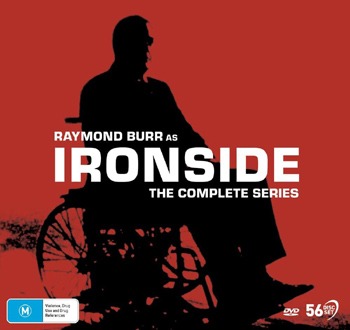
Raymond Burr redefined detective drama in *Ironside*
Starring alongside Burr are Don Galloway, Barbara Anderson, and Don Mitchell, each contributing to the show’s realistic, character-driven take on law enforcement. From gritty street crime to political corruption, Ironside dared to tackle subjects TV rarely touched and did so with style and brains.
- 📀 Format: DVD – 56 discs
- 📺 Episodes: All 199 original episodes from 8 seasons
- 🎬 Bonus: Includes the original pilot movie
- 🎖️ Genre: Crime/Drama
This isn’t just a cop show it’s a cultural milestone in crime television, led by one of the most respected figures in TV history.
💼 Business Ventures & Generous Spirit
While Raymond Burr found international fame in front of the camera, his life away from the spotlight revealed a deeply compassionate and entrepreneurial side. In the early 1950s, he operated a high-end art gallery on Rodeo Drive in Beverly Hills an unexpected endeavor for a television star. Later, in 1961, he co-founded the Swarthe-Burr Gallery, which showcased contemporary works and reflected his genuine passion for painting. Burr was not only a patron of the arts but a painter himself, though his talent in that area was often eclipsed by his towering TV persona.
Beyond business, Burr's philanthropic efforts were expansive and quietly impactful. He was reportedly involved in adopting or sponsoring 27 children from around the world including Fijian, Vietnamese, Greek, Korean, Filipino, and Italian backgrounds many of whom he supported through organizations like Mickey Finn’s Boys Club. He was said to have learned elements of their native languages, not just to communicate, but to build personal bonds with each child. His commitment extended beyond symbolic gestures; Burr actively financed their education and long-term well-being.
On the Perry Mason set, Burr was known for his unspoken generosity. He frequently offered roles some with just a few lines to struggling actors who needed the paycheck, often repeating this kindness without fanfare. This quiet loyalty to others earned him immense respect among his peers. In return, those who worked closely with him often shielded his private life from public scrutiny, including his long-term partnership with Robert Benevides. The sense of family Burr created on set and off-screen reflected a man who valued loyalty, compassion, and quiet dignity over fame.
📎 Did You Know?
Raymond Burr once claimed to have a dead wife and a dead son neither of whom existed. The stories were invented to deflect personal questions.
🕊️ Later Years
Summary: Burr returned to the courtroom in a beloved TV movie revival and found peace managing a vineyard while battling illness with grace.
As Raymond Burr entered the later chapters of his life, he showed no signs of slowing down. In fact, the 1980s marked a full-circle return to the role that made him famous. Starting in 1985, he reprised Perry Mason in a long-running series of television movies, ultimately appearing in 26 of them. These revivals brought back Barbara Hale as Della Street and introduced a new generation to Burr’s commanding courtroom presence. Despite declining health, Burr worked tirelessly, even filming the final Perry Mason movies while visibly ill, refusing to let physical challenges diminish his professional commitment.
In tandem with his return to Mason, Burr remained active behind the scenes. He managed the Raymond Burr Vineyards in Sonoma County with Robert Benevides, cultivating award-winning wine and turning the property into a successful and serene escape. The venture reflected Burr’s deep love of nature, tranquility, and craftsmanship values he rarely discussed publicly but expressed through the peaceful rows of grapevines he helped tend.
Throughout these years, Raymond Burr maintained a quiet dignity and a fierce sense of privacy. He never courted tabloid attention and resisted attempts to frame his life through a Hollywood lens. Even as rumors swirled, he kept the focus on his work, his causes, and his circle of close friends. Raymond Burr passed away on September 12, 1993, from kidney cancer at the age of 76. In his final days, he was surrounded by those who mattered most, leaving behind a body of work as solid and enduring as the man himself.
🏆 Legacy
Summary: Burr’s legacy endures as a groundbreaking actor, humanitarian, and symbol of strength both on screen and off.
Raymond Burr’s legacy is inseparable from the characters he portrayed steadfast, articulate, and morally grounded men who stood up for truth. As Perry Mason, he became the embodiment of courtroom drama, influencing generations of legal-themed television that followed. The show’s success helped redefine primetime programming, and Burr’s stoic delivery and unwavering gaze became iconic. His portrayal remains a cultural reference point so deeply embedded in American consciousness that reruns continue to draw loyal viewers decades later.
Beyond the courtroom, Burr’s role as Robert T. Ironside broke new ground in representation, portraying a wheelchair-bound police chief at a time when disability was rarely depicted on screen with dignity or complexity. The series addressed real-world issues and allowed Burr to show layers of compassion and strength without sentimentality, proving he was more than just a one-role wonder.
Off-screen, Raymond Burr is remembered just as fondly for his philanthropy, his advocacy for the underrepresented, and his unwavering loyalty to friends and colleagues. He created safe spaces within Hollywood, often without recognition, and left behind a reputation of generosity that few could rival. Whether in black-and-white noir or full-color TV dramas, Raymond Burr’s presence commanded attention and his legacy endures not only in film archives but in the quiet impact he had on countless lives.
🗣️ Why He Still Matters
Raymond Burr’s impact reaches beyond courtroom drama. As Perry Mason, he set the gold standard for TV lawyers decades before binge-watching was a thing. But what makes him timeless isn’t just the sharp suits or the perfect case records it’s that Burr lived with layers. His carefully guarded private life, his commitment to protecting his image, and his generosity behind the scenes all reflect a man far more complex than any role he played. At a time when public figures were tightly controlled, Burr controlled his own narrative. That makes him worth remembering and rewatching.
Further Reading & Resources
📖 Raymond Burr, Actor, 76, Dies; Played Perry Mason and Ironside
📰 Life of Raymond Burr - Gloubik
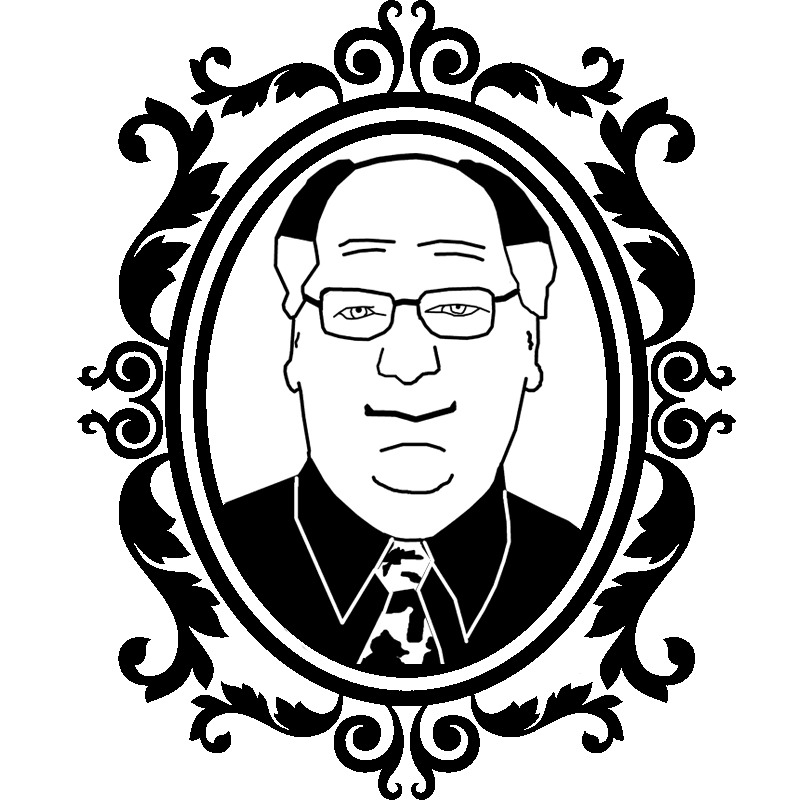
ML Lamp is the owner of Kilroy Was Here. After his 20 years of working in Las Vegas in the entertainment promotions field, Mr. Lamp retired in 2002 from his job to pursue his passion for collectibles. Now as a guest speaker and author he’s living the dream, and sharing his warmth with You.
